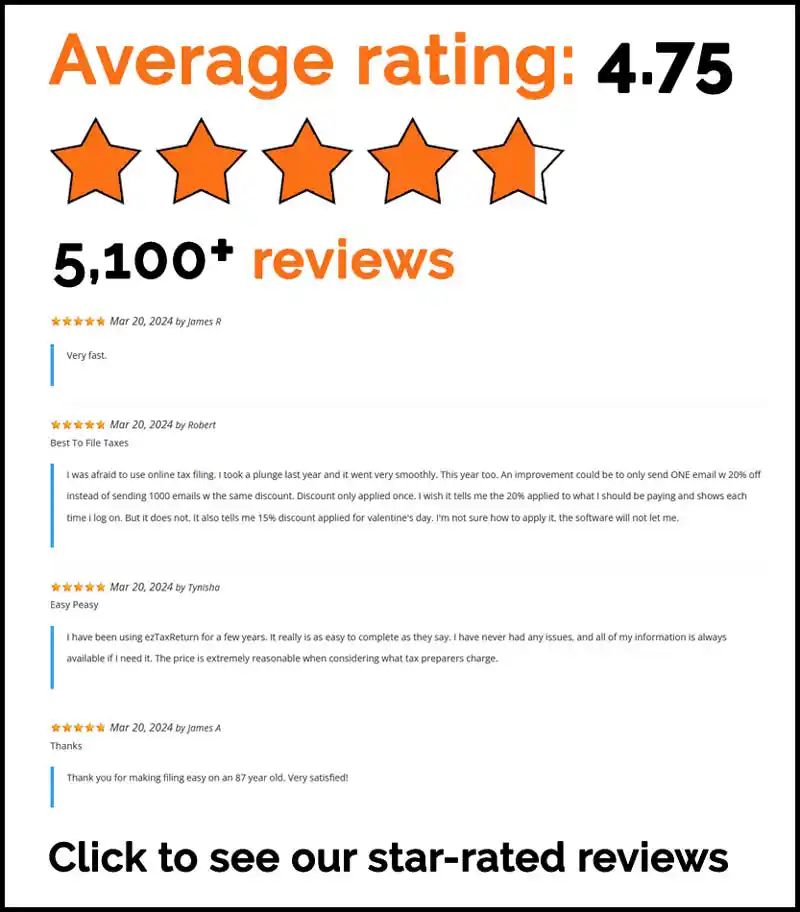The information in this article is up to date for tax year 2024 (returns filed in 2025).
More than 100 million American adults care for a child, parent, or relative. That’s 1 in 5 people providing care in addition to working outside the household in the US–up from 1 in 7 in 2020.
Caregiving can significantly impact people’s finances, with 78% of caregivers incurring out-of-pocket expenses. In fact, caregivers in the U.S. spent an average of $7,242 in out-of-pocket costs in 2021, according to the AARP.
Luckily, there are tax credits, deductions, and other strategies caregivers can use to help ease the financial burden come tax season.
Use these tax tips for caregivers to lower your tax bill this year.
How Your Income Is Taxed
As a caregiver, it’s important to know how your earnings are taxed. Any income you make from caregiving, like wages or tips, is taxable. You’ll likely need to file a tax return to report it and take advantage of any deductions or credits you qualify for.
Caregivers may receive income from various sources, including:
- Government programs, such as Medicaid or Veterans Administration benefits
- Private insurance companies
- Family members or friends
- Long-term care insurance policies
You need to keep accurate records of your income, including receipts, invoices, and bank statements. This ensures you’re reporting your income correctly and taking advantage of any tax deductions or credits available to you. Proper documentation can help you manage your taxable income effectively and reduce your overall tax burden.
Claim Tax Credits for Caregiving
Caregivers may be able to claim certain tax credits or deductions, such as:
- Child and Dependent Care Tax Credit
- Tax Credit for Other Dependents
To qualify for these credits, it is essential to understand the criteria, including the impact of income tax withheld. For instance, married dependents can only be claimed if they do not file a joint return, except to recover income tax withheld.
Here’s how they work:
Child and Dependent Care Credit
Child and Dependent Care Credit partially reimburses you for the cost of caring for a family member while you (or your spouse, if filing jointly) worked. For married couples filing jointly, eligibility for the credit is determined by their combined adjusted gross income. The credit amount depends on your adjusted gross income and is a percentage of the work-related expenses you paid to a care provider. You can claim up to $3,000 of caregiving costs for one person, or $6,000 of caregiving costs for two people.
To qualify, you must meet the following requirements:
- The individual must qualify as a dependent
- The individual must be unable to physically or mentally care for themselves
- The individual must have lived with you for at least six months of the year you are filing taxes for
- You (and your spouse, if filing jointly), must have earned income in the tax year
- You paid caregiving expenses to enable you (or your spouse) to work or look for work
If you qualify, you don’t have to itemize your deductions to claim the Child and Dependent Care tax credit. Get your taxes done fast with ezTaxReturn!
Tax Credit for Other Dependents
Taxpayers with dependents who don’t qualify for the Child Tax Credit, may be able to claim the Tax Credit for Other Dependents. The Internal Revenue Service (IRS) provides guidelines for claiming this credit, ensuring compliance with tax regulations. This allows you to claim up to $500 as a nonrefundable credit for each qualifying dependent. The credit begins to phase out when your income hits $200,000 (single) or $400,000 (married, filing jointly).
To qualify, you must meet the following requirements:
- Your dependent is a child over age 17 or a parent or relative supported by you
- The dependent is a U.S. citizen, national, or resident alien
- The dependent has less than $4,700 gross income this year
- You provided more than half of their support
- The dependent lived with you for the entire year or are related to you
- The dependent is not filing a joint return with their spouse
Deduct Qualifying Medical Expenses
If you pay out of pocket for caregiving costs, you may be able to deduct some of those expenses on your tax bill. To deduct these expenses, you will have to itemize your return. You can deduct any qualified unreimbursed medical expenses that are over 7.5% of your 2024 adjusted gross income.
For example, if your AGI is $50,000, you can deduct any qualifying medical costs over $3,750.
Qualifying expenses include:
- Payments to doctors, surgeons, dentists, etc.
- Nursing assistance
- Prescription costs
- Qualified long-term care services
- Hospital care
- Transportation costs to and from medical appointments
- Nursing home care
You can only deduct expenses paid for during that tax year. You cannot deduct any expenses that were reimbursed (for example, any costs covered by insurance). File smarter, not harder—use ezTaxReturn!
Use Health Savings Accounts and Flexible Spending Accounts
Tax credits and deductions are not the only way to be tax-savvy with your caregiving finances. You can also use tax-advantaged accounts, such as Health Savings Accounts (HSAs) and Flexible Spending Accounts (FSAs), which allow for tax deductible contributions to pay for medical-related expenses.
Health Savings Accounts (HSA)
A Health Savings Account, or HSA, is a tax-advantaged savings account that lets you deposit earnings pre-tax. Interest income generated within an HSA can be part of a tax-aware investing strategy, similar to how tax-free municipal bonds work. You can then use the untaxed funds in your HSA account to pay for qualified medical expenses, including deductibles, copays, treatments, and more—thus reducing your out-of-pocket costs.
You can only contribute to an HSA if you have a high-deductible health insurance plan. And you cannot deduct any of the medical expenses you pay for with HSA funds.
Flexible Spending Accounts (FSA)
Flexible Spending Accounts are employer-sponsored accounts you may receive as part of your benefits package. FSAs allow you to set aside money from your paycheck pre-tax to spend on qualified medical and dependent care costs. When deciding between below-the-line or itemized deductions, it’s important to consider the standard deduction and how it might affect your tax filing.
There are three different types of FSAs:
- Limited Expense Health Care Account FSA (LEX HCFSA)
- For eligible dental and vision expenses
- Max contribution: $3,200
- Healthcare FSA (HCFSA)
- For eligible medical costs
- Max contribution: $3,200
- Dependent Care FSA (DCFSA)
- For any child or adult dependent care expenses
- Max contribution: $5,000 per household or $2,500 if married but filing separately
Keep in mind that FSAs are use-it or lose-it accounts. This means any contributions you don’t spend from your FSA will be forfeit at the end of the year. In other words—only contribute what you expect to spend that calendar year.
If you are a caregiver, be sure to keep track of all your expenses through the year so you can get the biggest credits and deductions on your tax bill.
Need help filing your return? ezTaxReturn can help. File today.
The articles and content published on this blog are provided for informational purposes only. The information presented is not intended to be, and should not be taken as, legal, financial, or professional advice. Readers are advised to seek appropriate professional guidance and conduct their own due diligence before making any decisions based on the information provided.




